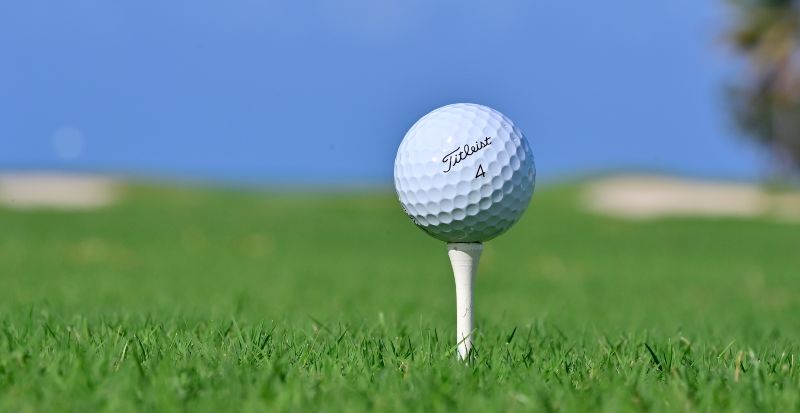
Article by Christian Monson
Do you have a lucky golf ball? Turns out it might be more than just superstition. There are tons of brands and models to choose from, all of which vary significantly in a number of aspects. Some of them will be better for you personally than others.
In fact, it can be a little intimidating considering all the options you have. Luckily, if you know a little more about golf balls, you can figure out what factors are most important to your game and skill level.
This guide goes over everything you need to know to make an educated decision. At the end you’ll even find recommendations for whatever kind of ball you’re looking for.
How are golf balls made?
The most important part of the golf ball is the core. Machines make cores in a multi-step process that turns sheets of rubber into the round slugs that give golf balls their bounce. These cores are then finished by cooking.
Once the cores are made, they’re covered with plastic. This plastic is moulded to feature the dimples that give the golf balls their signature shape. These dimples are an important feature of the ball and factor into the ball’s speed, distance and movement.
The covered golf balls are then milled to remove any imperfections. A machine spray paints logos onto the balls, after which they’re sprayed with polyurethane and dried.
If you’re interested, here’s a video showing how golf balls are made…
Things to consider
Hardness
For the vast majority of golfers, harder means better when it comes to golf balls. A harder ball translates to higher velocity off the club which means more distance and better accuracy. It’s easy enough to compare two balls on your own. Just squeeze them and go with the firmer one. If you’re buying online, read the reviews or ask other buyers how the ball compares.
Surface material
Golf-ball covers can be made of either urethane or ionomer. Ionomer balls are less expensive and more durable, so they make sense for beginners or casual players. That said, the pros use urethane balls. That’s because they spin a lot more on the greens and are responsive to even the slightest changes in your swing. If you’re not up to that level of nuance yet, just stick with the ionomer balls.
Construction
Golf balls can be anywhere from one piece to five. This refers to the number of layers the ball has. The layers affect how the ball reacts and spins as well as its distance.
One and two piece balls
These balls are pretty durable, and they’re cheap. As you can guess, though, they don’t have a lot of bounce. They don’t go very far, and they don’t react much to changes in swing. If you’re a beginner, this is what you want. They’re also fine for the range or just playing around with your kids since it’s not a big deal if you lose them.
Three piece balls
Balls with three pieces begin to have significant spin. That’s due to the three different layers that don’t necessarily move together. Pros rarely use anything less than three-piece balls since you get a lot more nuance from them. Once your skills are up to par, you might want to graduate up to these.
Four and five-piece balls
You have to shell out some cash for these. If you’re playing tours, you definitely want them, though, because they react well. You can get the best and most accurate shots if you have the skills to make them. That said, for everyday practice, you probably don’t need anything more than three-piece.
Spin
Spin is one of the most important things you should think about when choosing your golf balls. Balls are often categorized into low-, mid- and high-spin balls.
Low spin
Low spin balls go straight, but they do not go far. That makes them ideal for people with low swing speeds like seniors or beginners. They also roll farther on the green, which gives you a little more leeway.
Mid spin
As you might guess, mid-spin balls are the right choice for the majority of players. The spin isn’t so high as to make accuracy too difficult, but there’s still enough to get good distance and flight. If you’re a casual player who knows what they’re doing, go with one of these.
High spin
High-spin balls really fly. That means you need skill to control them. Don’t buy these kinds of balls unless you know what you’re doing.
Your Clubs
You can’t base your ball decision totally on the ball itself. Different balls will work best with different clubs. Unfortunately, this is kind of a trial and error process. You might want to try several different kinds of balls first to see what matches your clubs and your style. You also might consider reading reviews and advice from other people with your clubs to see which balls they prefer.
Golf ball recommendations
If you are a beginner player then here are a few good options for you. These are also suitable for more experienced players who want some good value balls for the driving range. These balls are great for the price. You’ll get good practice without having to break the bank…
If you are a more serious player, then it’s worth investing in some better quality golf balls. With better quality balls you will be able to increase your distance and impart more spin. Here are some good choices…
Final thoughts
Golf ball shopping can be complex. That can seem overwhelming, but you can really use it to your advantage. The variety and detail mean you can find the best ball possible for your game.
Moreover, it’s easy to start simple and work your way up. You can always play around with a ball and then try out a ball with more spin and more complicated construction. After all, it’s pretty hard not to have fun hitting a golf ball.

